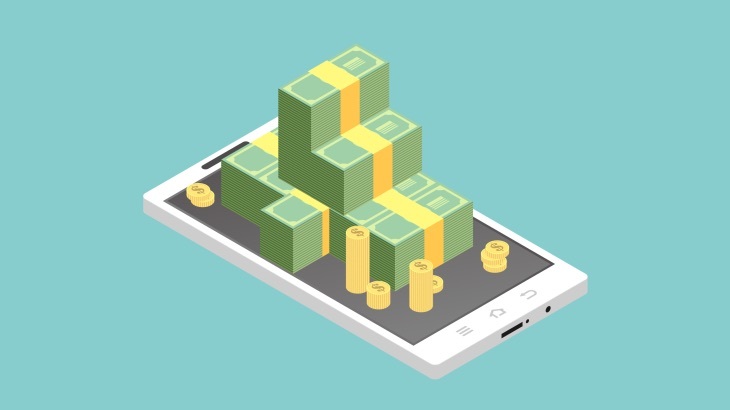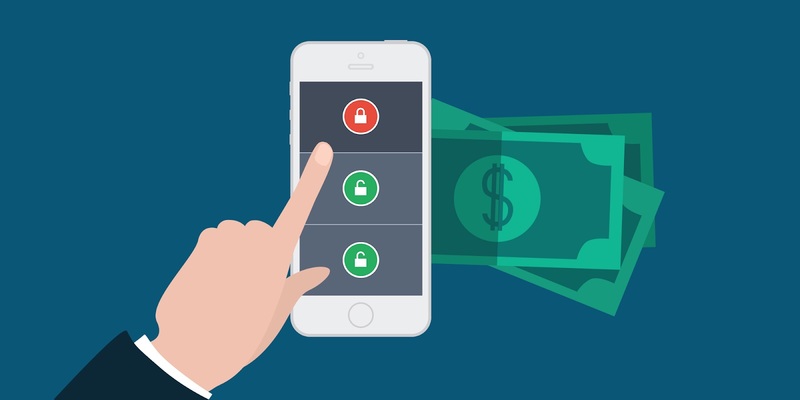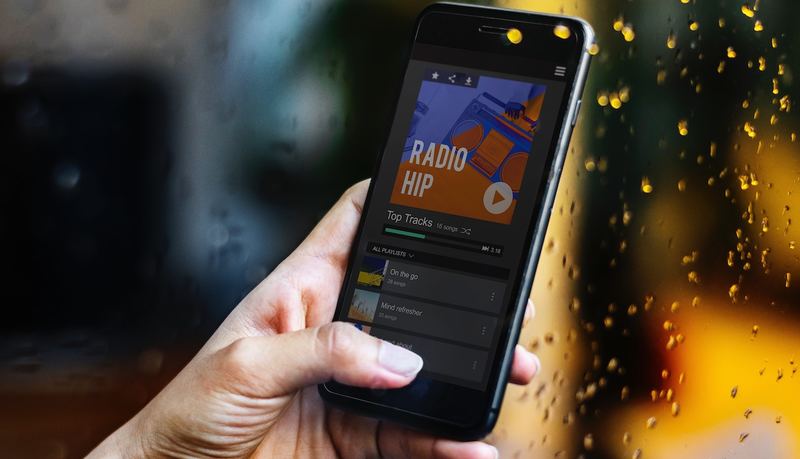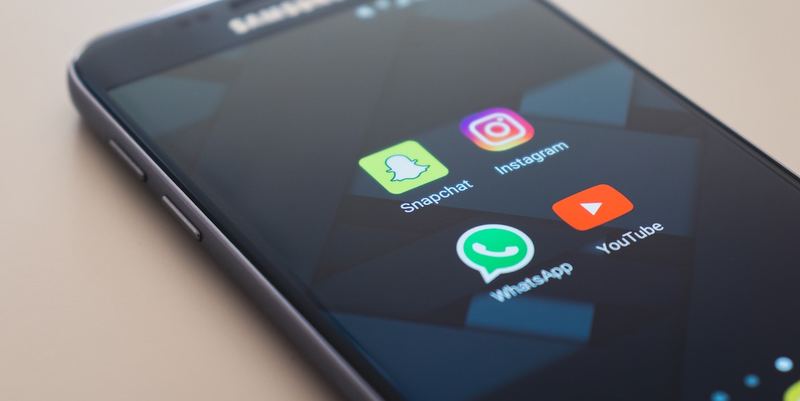App development is about making our IT-driven world a better place. It is also about making money. This scope is one of the most profitable nowadays, so everyone is striving to jump into the app business.
However, sometimes your app may turn out to be less prosperous than you planned. Although there can be many reasons for that, a low-income app segment and an inappropriate monetization model are often the core of the failure.

Let's find out which types of apps are most profitable and discover how to realize their potential to the max.
3 Main Revenue Sources for Your Mobile App
First things first, there are 3 monetization models most apps rely on. Let's figure out their specifics so we can reference them further.
Freemium App Plan
You may also know this model as the one with "in-app purchases". The principal idea is to offer shareware – a limited software version – to let users evaluate the product quality, and urge them to apply for the paid subscription.

Why does this approach work? You see, our data-driven business creates fierce rivalry in the IT market. Even the tiniest advantage over your competitors matters. An opportunity to try out and use your app for free instead of paying upfront is a way to increase user loyalty and secure the revenue. Very few users buy apps before testing them.
In-App Ads
At the same time, you can exclude user expenses entirely by implementing paid ads into your app’s user interface. A significant percentage of mobile apps have commercial blocks in their interface displaying dynamic advertising content.
While customers don't have to pay a single cent with this model, there are other issues you will face with it. Here are the most critical ones:
- User experience quality decreases. No matter how organically you place the ad, it will distract users from the content and, therefore, make them just a bit less happy with your product.
- The issue of appropriate advertising content. Most ads – whether from Google AdSense or any similar services – are generated dynamically, which implies the impossibility of verifying their relevance. Although big sponsors can be trusted, you can't guarantee a 100% advertisement accuracy.
- Small monetization opportunity pool. Showing sponsored messages is pretty much all you can do to generate income. Want to watch this movie? Listen to our ad first.
You can easily negate these drawbacks of ad revenue by providing truly great content. Otherwise, it's just a matter of time until your customers install AdBlock.

Paid App Services
There are application concepts that just can't be free of charge. Payment, shopping, banking, and other similar apps rely on the paid services they provide.
You can always combine paid services with the premium plan model, where people subscribe to a plan, for instance, to pay a lower transaction fee if they use the product a lot.
Most Profitable App Categories: The Top 8 Development Segments
Now that you know the essential monetization aspects, let's move to the actual app niches that you may want to have a closer look at.
1. Entertainment
Games have always been the most popular app category, and they will remain the leader in terms of audience reach. Technologies come and go, but there is always room for new entertainment concepts. It's the nature of human beings, and you should use it to your advantage.
One thing entertainment content does best is drawing attention. You can easily reach hundreds and even thousands of daily downloads.
At the same time, an assertive monetization strategy, like a paid game subscription, is usually not an option. First of all, because the games industry now has a "free-to-play" tag in most cases.
Moreover, customers can often find a free alternative to almost any entertainment app. This is why proper monetization is your primary objective. Non-intrusive ads or the freemium model is what you may be looking for.
Just remember that your free-of-charge content can't be solely the bait for in-app purchases. Make sure people still enjoy the game even if they stay on the free plan. Just like Subway Surfers or Angry Birds, your game should be 100% playable without a cent being spent on it.
2. Business and Finance Apps
While games represent the leisure segment, business and finance apps focus on the working target group. These people are making money, and you can make it more convenient for them.

Here are the most efficient business apps concepts you can earn with:
- Corporate messenger. The need to communicate is always relevant. It is all about providing a more comfortable and affordable way for people to chat. Enterprise messengers often come with a limited trial and a premium plan.
- Mobile payment app. People are paying with their smartphones more and more frequently these days. Bills, peer-to-peer and universal payments are in high demand right now. Come up with an app concept and start earning with the paid-services monetization model.
- Enterprise management software. Feel like playing big? Most SMEs lack quality management tools. Employee task tracker, productivity monitoring systems and organizers – all these apps are useful for the enterprise management niche. By charging companies for the office suite or for every employee in the system, you can generate substantial revenue.
Just remember to conduct market research, as this segment is the most sensitive to the competition. Even minor rivals will complicate your brand growth.
Read also: How to Make a Successful App for Business
3. Lifestyle Apps
These applications cover the active audience that is always on the move. Entirely different people, significantly different reach strategy and monetization approach – let's figure out this product segment.
Thanks to the mobile revolution, everyone with a smartphone can now have their own gym assistant or convenient taxi service. These are handy technologies, and quite a wide audience uses them.
If you plan to create an app like Couch to 5K, make sure you think through the monetization model wisely. You shouldn't distract people with ads during the exercises, and the paid-only approach isn't viable here either.
Consider including additional statistics and helpful features in the premium plan. More interestingly, you can monetize your data, as many workout centers are interested in average statistics to make their services the most appealing.
Then there are apps like Uber and TripAdvisor. You just subtract the fee from every transaction. That is pretty much it. If you strive to launch a food app like Yelp, you can monetize it with the restaurant owners you promote through your product. As you can see, approaches to generating mobile app revenue by category and within a category may vary substantially.
4. Education Apps
What kinds of apps are the most popular? Games. It's simple. But which ones have the biggest retention rate? Educational applications, due to their tremendous value, force users return to them over and over again. And this is what places them among the most profitable software categories.
Education-oriented apps are served best with additional premium content, and the key word is "additional". Don't compel your users to upgrade. Just provide the best free experience you can and kindly suggest accessing even more with your paid subscription.
Read also: How to Create a Language Learning App
5. Music & Audio
We can hardly imagine a person who does not listen to music on a daily basis. Once again, mobile devices have changed our habits for good, and this is an opportunity to monetize the needs of modern society.

Have you heard of Spotify? We bet you have. It is an excellent example of a great music app, and you can learn a lot from it. Spotify lets you enjoy the music, create playlists, etc. for free. But what you get with a premium plan is something extraterrestrial (or at least it seems that way).
Better music quality, unlimited experience with ad-free UI – you can offer these features in one of your plans. As you can see, the freemium model is the best option for a music & audio application.
6. Tool Apps
Whenever you need a flashlight app or a weather forecast, you start by looking for a suitable tool app. These products are just useful, and this is their key benefit.
You can put your development efforts into this segment and create an exceedingly helpful app. However, its monetization is much more tricky than the actual software. The point is: these applications are rarely used more than a few times, which means that nobody will even consider a premium subscription.
At the same time, putting ads in your UI is a mistake as well. A tool app is about being useful, not distracting. Here are two paths you can choose from:
- Make an entirely paid app. A unique functionality will find its fans one way or another. It's just a matter of a quality marketing strategy.
- Rely on charitable contributions. Oddly enough, this sometimes works pretty well. Have a look at AdBlock. It's just asking for a donation, not forcing you to pay.
All in all, this category is a little bit complicated, but if you are ready for challenges, you will surely succeed, because not many developers decide to go with this app segment.
7. Shopping Apps
Like the other software segments mentioned above, shopping apps have quite a wide audience. Have a look at the recent US shopping apps statistics (the numbers are in the millions of monthly users).

Considering that every active shopping app customer buys something from time to time, these apps are guaranteed to monetize the traffic. And the best news is: there is nothing complicated about generating revenue from a shopping application – implementing a transaction will be enough.
Of course, you can create premium plans with smaller fees, better search results positioning, etc. It's a matter of your creativity and ability to sell your value.
Read also: What is mCommerce?
8. Social Media
Last but not least, social media apps are still one of the most profitable niches. And they are for a reason.
People are social creatures, and they won't stop communicating, no matter what. This is what social media apps are for. You create a handy chat interface, and there you have it: the social app is ready, right? Not exactly.
You definitely know how much effort social networks put into fighting for every single user. It's one of the fiercest rivalries you can ever witness. But they’re not fighting for nothing.
The truth is: Facebook’s revenue is higher than some countries' GDP, and it is no surprise. As of the third quarter of this year, Facebook can boast of more than 2.2 million active users – that’s almost 30% of the world population. Now you know which apps make the most money, don’t you? Well, let’s not forget that Facebook is the business shark of the social media segment.
But how exactly do social media platforms generate revenue? Here’s the kicker: these apps provide enormous promotional value. Social networks are the perfect advertising platforms, and sponsors are well aware of it. People are just having a good time on these applications and don't mind seeing an ad once in a while.

Pinterest, for instance, is an idea-driven app concept, which makes its ads the most natural. You look for a specific product, and you get one.
Read also: How to Create a Social Media App
The Bottom Line
As you can see, there is a broad range of profitable development opportunities. Just make sure you find the one you can realize the best. After all, this isn't about what type of apps make the most money. It's about how you can develop and build something new, make it work, and gain income. Stop at nothing and focus on the value for customers, not on the money you are going to earn. Contact us with your app idea and we'll help to create a perfect app.







